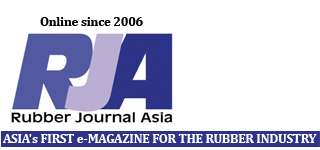 THE Malaysian Rubber Board (MRB) is laying down new strategies for the local rubber industry, according to Director-General Datuk Dr Salmiah Ahmad.
THE Malaysian Rubber Board (MRB) is laying down new strategies for the local rubber industry, according to Director-General Datuk Dr Salmiah Ahmad.
The strategies will sustain the current developments in the local rubber industry, which has shown tremendous growth, encompassing both in the rubber upstream and downstream sectors, over the years. In 2011, the industry contributed RM39.8bil in terms of export earnings, 200% higher than RM13.27bil in 2000 reflecting an annual average growth of 16.7%.
Under the upstream sector, the major areas, which would continuously be developed are the declining natural rubber (NR) production and the domestic low productivity.
Ahmad said that since 1982, the Malaysian upstream NR sector has contracted in size, especially in the estate sector as investors shifted their investments to ventures that indicated better profit potential.
“Thus, under Economic Transformation Programme (ETP), the Government has initiated two Entry Point Projects (EPPs) such as increasing average national rubber productivity to 2,000 kg per ha per year by 2020 (EPP 1) and ensuring sustainability of the upstream rubber industry (EPP 2) to address this issue,” she explained.
MRB observed that despite efforts to improve productivity, output for NR still declined by 8% to 9% in 2012 owing to unfavourable weather conditions.
This year, the board said that it does not see any indication that production will pick up, considering that harvest has also been adversely affected by unskilled tapping.
Moreover, it said that productivity still remain low due to a still persistent use of old and low yielding clones, ageing smallholders that do no comply with good agriculture practices, unskilled harvesters and low adoption of latest latex harvesting technologies and low mechanisation.
Malaysia’s average yield per hectare is estimated at 1,500 kg, which is much lower than other major NR producing countries like Thailand, Indonesia and Vietnam.
On the downstream sector, the implementation of minimum wage of around 29% ( effective since 1 January), gas tariff hike, NR feedstock prices, labour shortage and growing environmental-related issues are affecting output.
Capital expenditures are estimated to have hiked up to address unskilled labour with automation. MRB said that industry players are planning to cut their unskilled workforce involved in stripping, counting and stacking by as much as 30% this year.
In the glove sector, MRB expected an increase in the cost of raw materials – NR feedstock – between February and May this year as the wintering season comes and NR production declines. However, the prices will go down once production normalises after the wintering season, it said.
Salmiah, meanwhile, projected a strong demand for nitrile gloves to continue to overtake latex rubber gloves in terms of market share, owing to the price competitiveness of nitrile gloves as they were a premium substitute for latex powder-free gloves.
“The nitrile glove demand grew at around 20% to 30% in 2011-2012, and it is expected that the double-digit growth momentum will continue into 2013,” she said.
Nevertheless, both the midstream and downstream sectors are expected to depend on importation of NR either in latex or dry rubber from the neighbouring rubber producing countries.
Based on statistics in 2011, Malaysia imported 667,434 tonnes of NR which comprise of 45% latex while the remaining of 55% is dry rubber. Salmiah explained that focus has been given to the recent shortage of latex to meet the requirement of latex-based products, which account for an estimated 80% of export earnings of rubber product sub-sector.
Meanwhile, on the manufacturing front, local firms deal with shortage of local labourers by hiring foreign workers, she said. In 2010, 52.7% of 78,878 workers in the rubber product manufacturing were foreign workers.
Hiring and training costs for hires are cutting into the production costs of manufacturers , a trend that is likely to continue this year, Salmiah said.
Last but not the least, strict compliance to environmental regulations is also a major issue amongst industry players. “The rubber industry particularly the midstream sector is constantly facing increasing stringent environmental regulations due to global trends towards environmental awareness and conservation,” Salmiah said.
